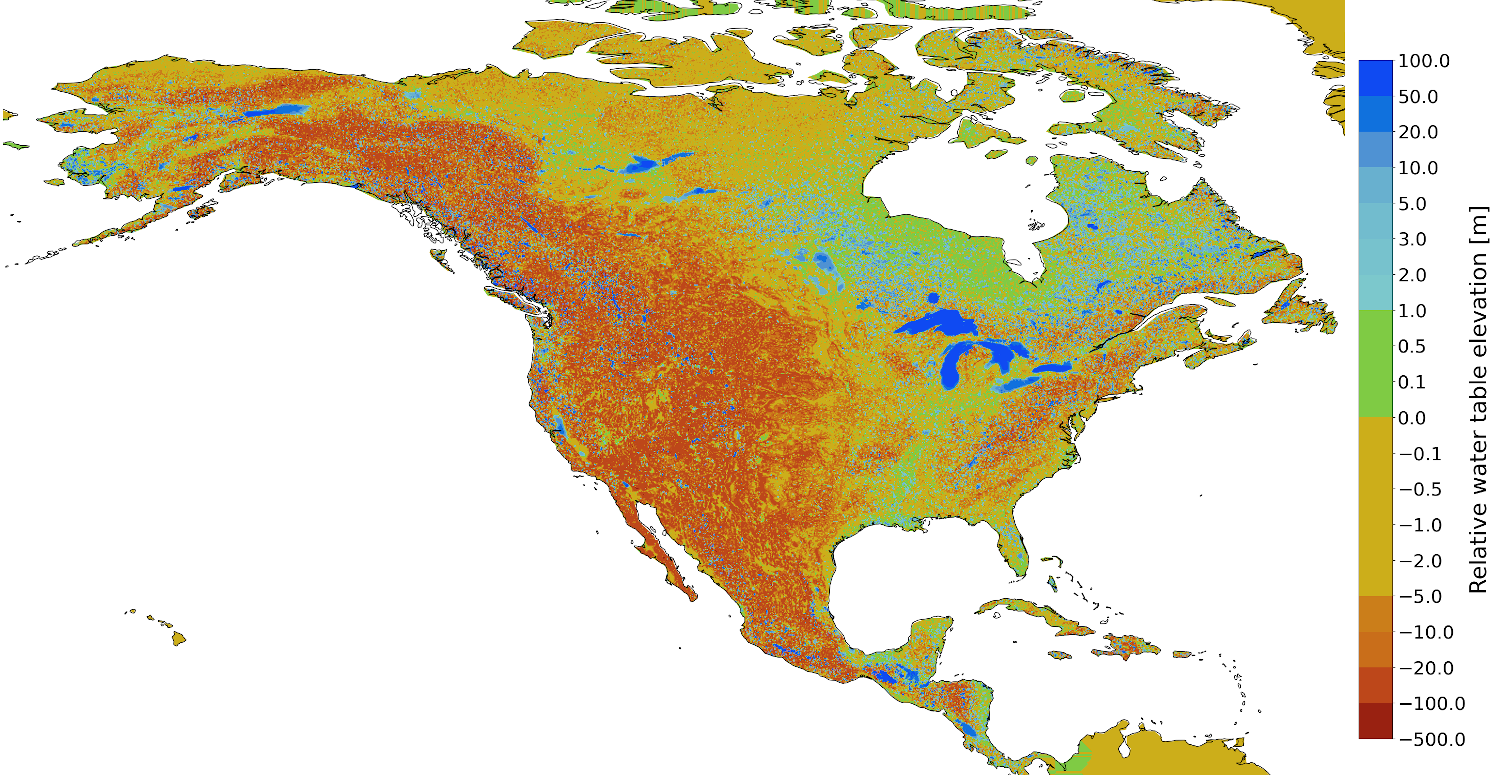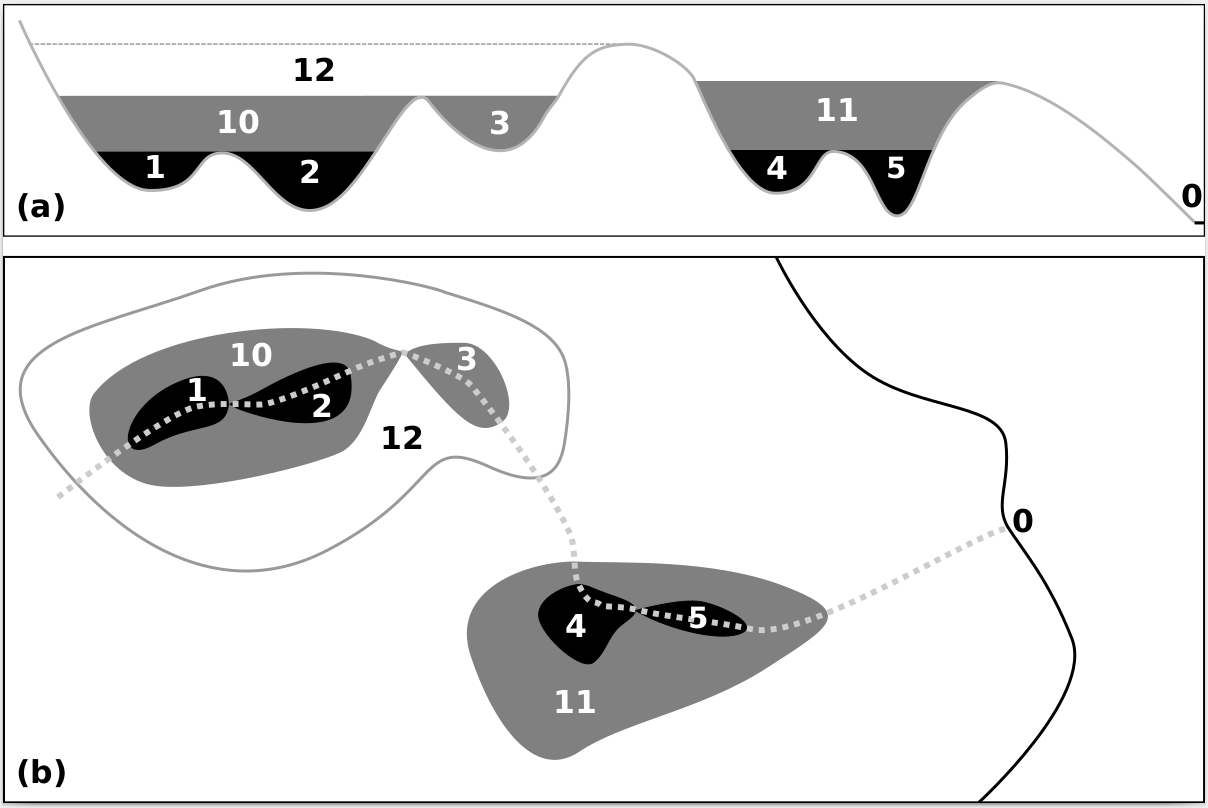Simulating changing water table
The Earth's hydrologic system includes complex links between many pieces: the ocean, ice sheets and glaciers, atmospheric water, rivers, and of course, lakes and groundwater. Groundwater is a vital resource and is widely used for irrigation and drinking water. Although human impacts on groundwater are extensively studied, changes in groundwater and lake storage over longer time periods is not well understood. One important question is: how does long-term climate change influence global groundwater distribution?
With this in mind, we ask: what about the impact of changing lake and groundwater storage on GIA? By incorporating these changes into a GIA model, we can determine how significant their impact is. Preliminary work indicates that local sea level is affected by several metres when taking the impact of lakes and groundwater on GIA into account.


